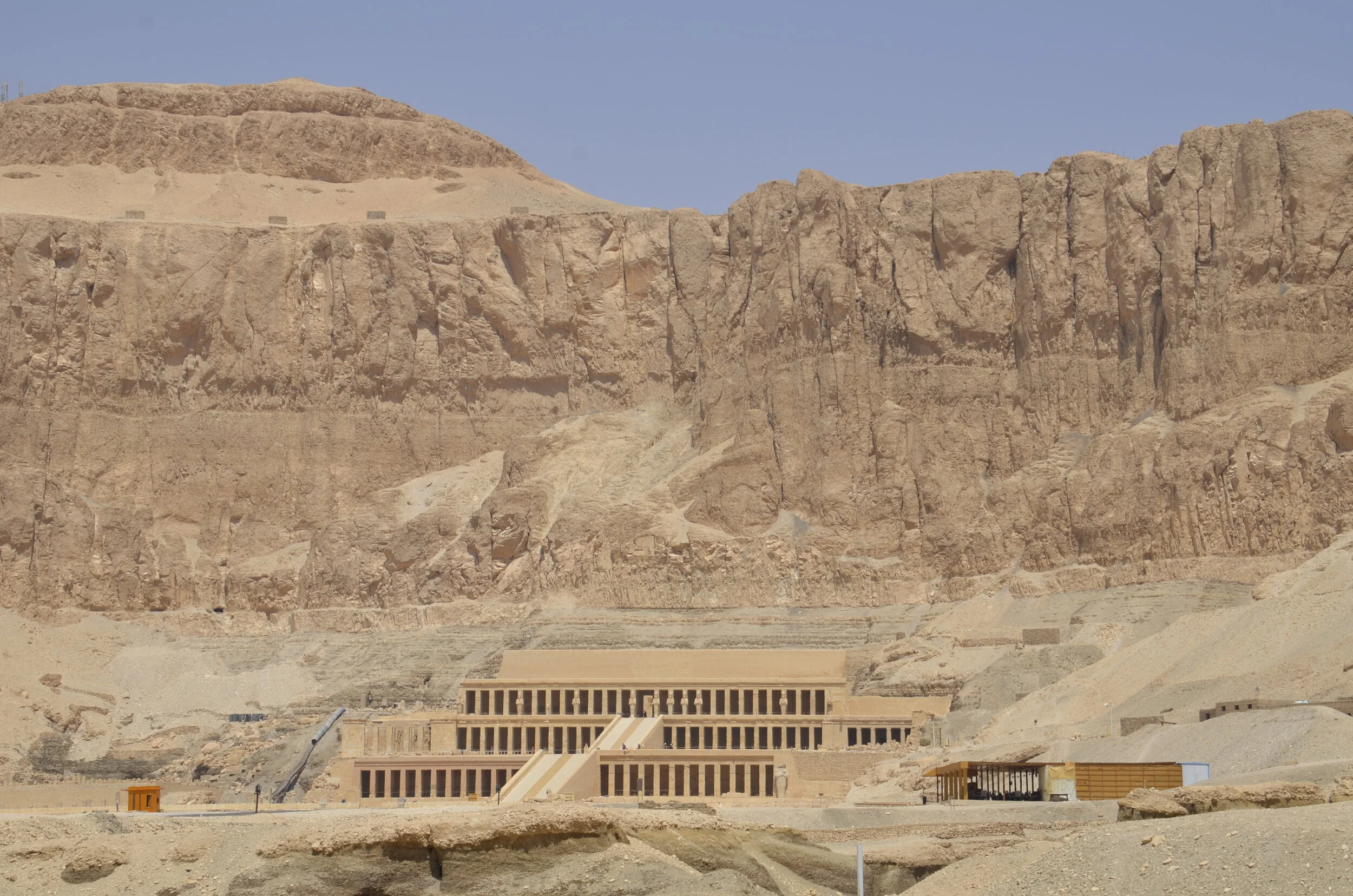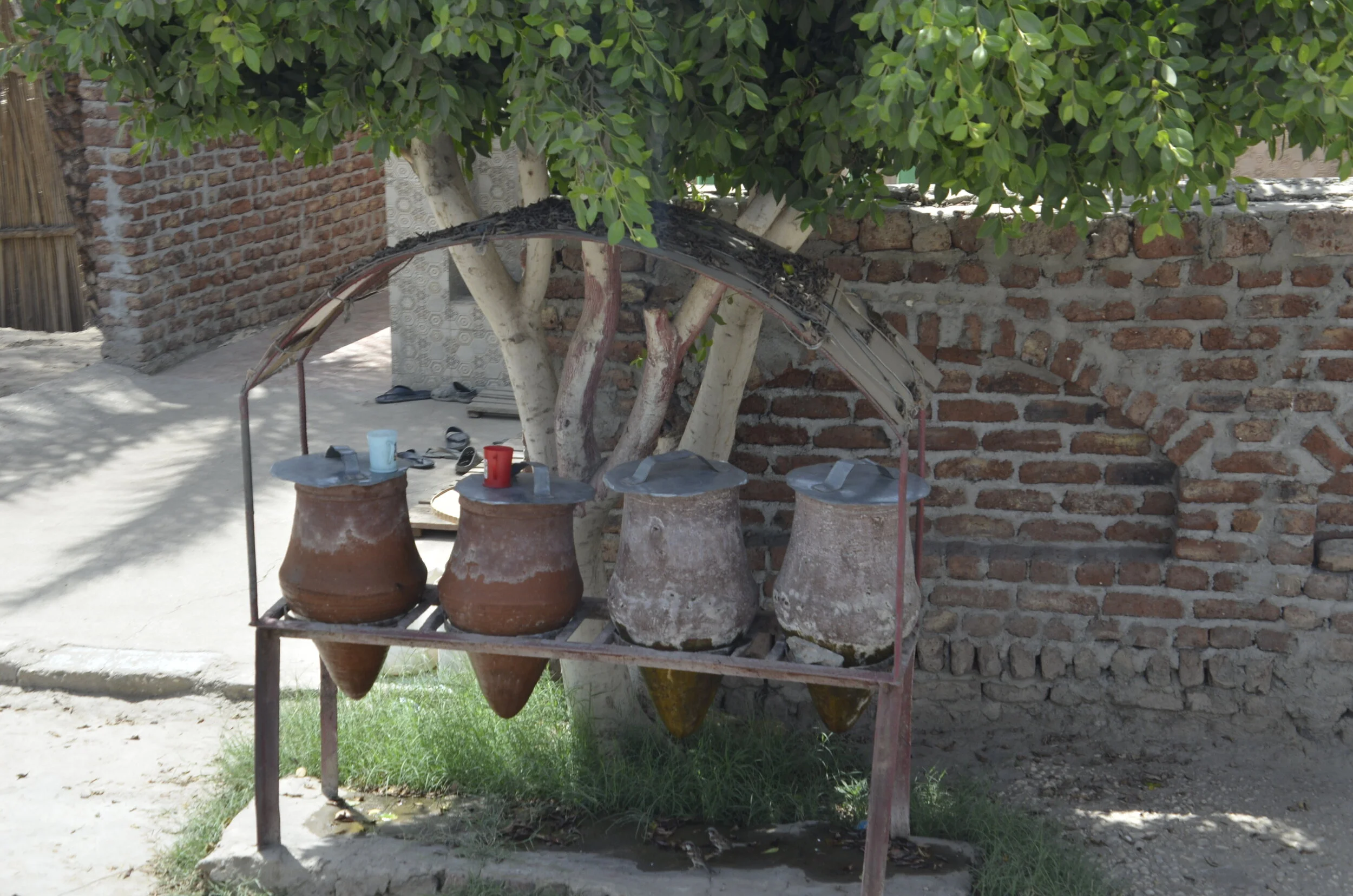Valley of the Kings
The second day on the Nile started super early for the rest of our group (0330) so they could do a sunrise balloon flight over the Valley of the Kings. Since we had done a balloon over the Serengeti, we opted to sleep in to 0500. ;) Sunrise on the Nile -
The Valley of the Kings is on the west side of the Nile at Luxor (we were on the east side the day before at the temples). This is where the royal tombs were cut deep into the sandstone hills you see in the picture above. From the 16th - 11th centuries BC, over 63 pharaohs and nobles were buried here, in gorgeously decorated tombs. “King Tut” was a very minor (and short lived) pharaoh, and I’m sure you’re aware of the riches found in his tomb. Imagine what must have been buried with Ramses the Great that was looted over the millennia.
We went into 3 different tombs…
…and were amazed at the vibrant colors still present after 3,500 years.
This huge stone sarcophagus was lowered into a tomb, but the entryway was too narrow, and so notches had to be cut into “doorframes” to let it pass -
We heard all sorts of interesting stories. Many carvings and statues were defaced by later pharaohs to try and erase the memory of their predecessors, or by Coptic Christians to defuse the power of the many gods depicted.
This was a rare (un-defaced) carving with its original coloring:
This was the tomb of Rameses III, and it was huge -
There a number of things to note in the picture above — the multitude of carved hieroglyphs; the vivid colors; the niches and side rooms off the main corridor, and its height; the deep blue color on the ceiling, with stars painted on it.
This tomb also had a rare depiction of musical instruments -
Current Egyptian excavation methods:
Near the Valley of Kings was the Mortuary Temple of Hatshepsut (my favorite female pharaoh). It looks like a little model, doesn’t it?
From this angle, it looks like the staircase goes straight up to the third level…
… when in fact, there is a broad plaza on the second level -
Hatshepsut was depicted on statues and columns with the ears of a cow…
… as a goddess who nourishes her people -
Words fail me at the intricacy of the carving and the colors still present 3,500 years later -
These were the only statues that we ever saw that had been painted. Even a female pharaoh had the beard depicted -
Even though we were all hot, tired and “tomb-ed” out, we had one more stop before our guide would let us stop for the day. In the Valley of the Nobles, there was some gorgeous carving inside a tomb (I loved the detail on the hair/wigs) -
It was also here that there was evidence of how the carvings were laid out…
… (“chalk” snap lines??) and rough drawings -
We then had a several hour bus ride to meet up with our boat that had headed upstream. In small villages we drove through, I saw metal containers or clay jars with common cups for thirsty passers-by:
We also saw different methods of transportation -
It was so interesting to see the narrow swath of green, irrigated land on either side of the river, and the desert just on the other side -
Next post will have more pictures of the Nile. Sorry, I don’t have any neat pictures to end this one with…























